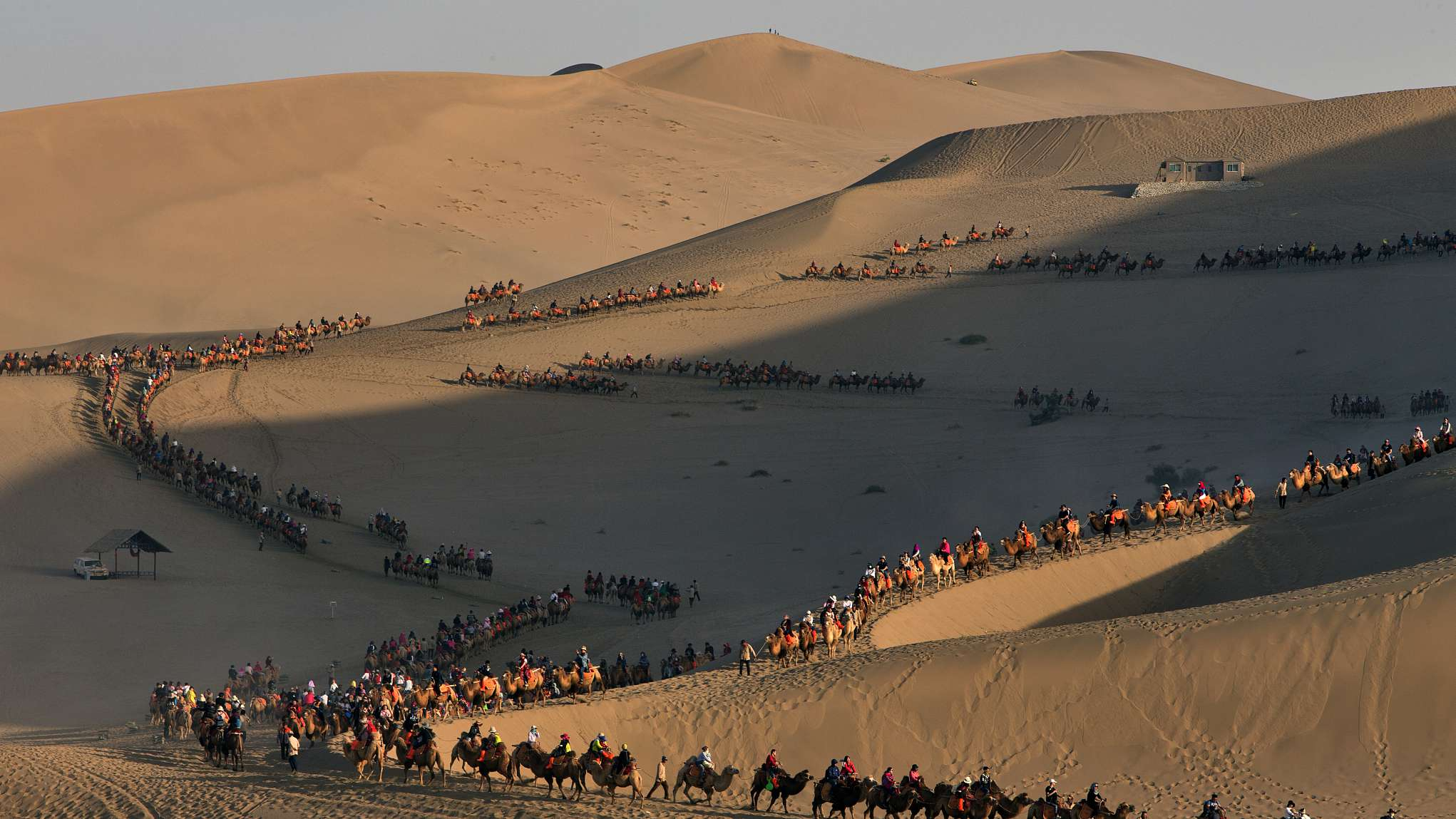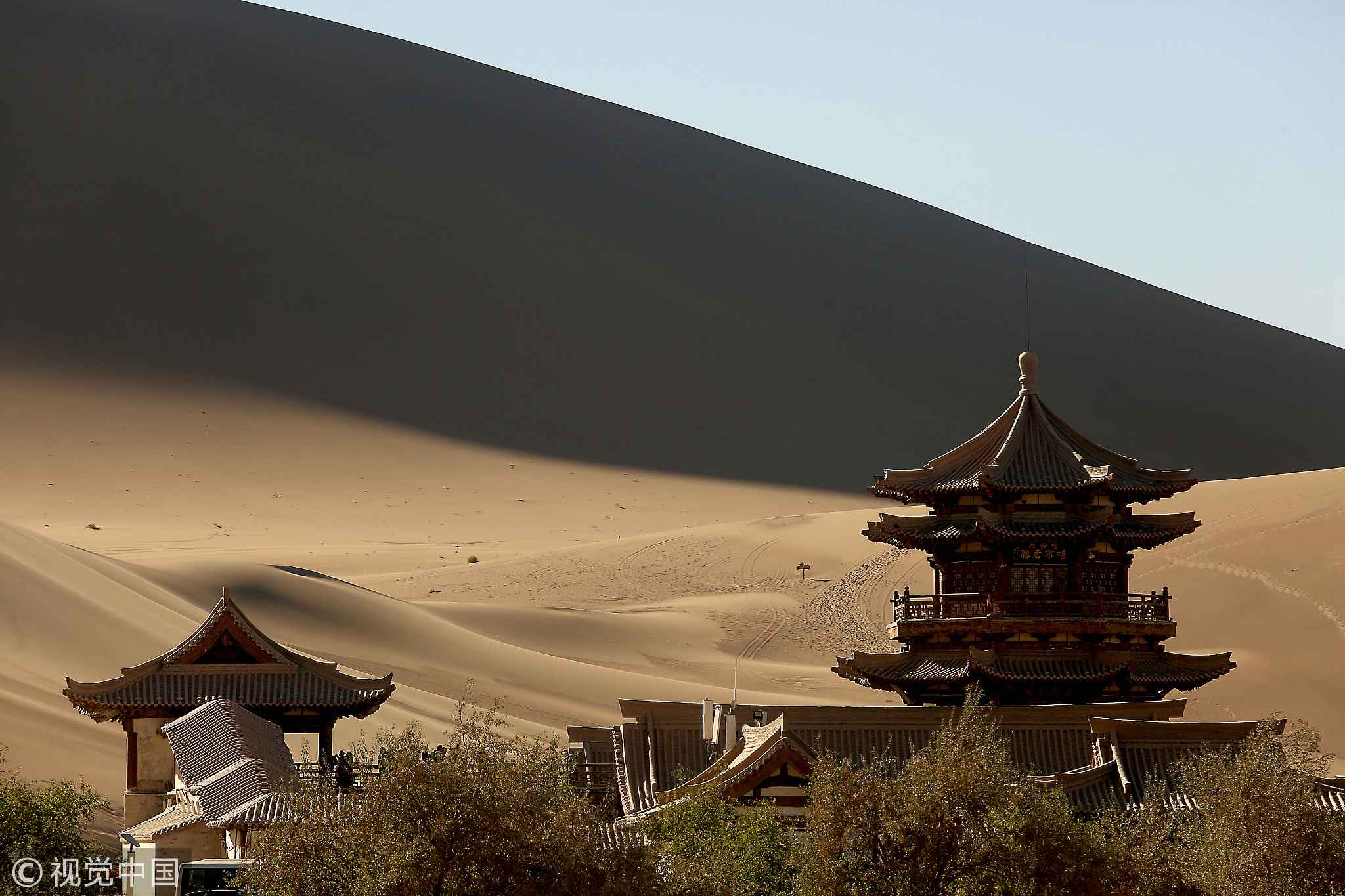
Culture
14:53, 03-Oct-2018
Dunhuang: Silk Road spirit drives scholarly exchanges
Updated
14:05, 06-Oct-2018
By Zhao Yuheng

The Belt and Road Initiative is not just about the connectivity between markets, but also the exchange of academia. A unique fusion of arts lies in the grottoes near Dunhuang, a major stop along the ancient Silk Road. Now the Initiative appears to be accelerating the fusion of academic thoughts.
A blazing beacon... that's one of many interpretations of the city's name "Dunhuang". Situated at the junction of the northern and southern routes of the ancient Silk Road, in the days of the silk trade, Dunhuang was a hub for businessmen: Those from the West would look at the wall of Dunhuang with relief after crossing the dry and treacherous desert, and those from the East would restock and prepare for the long journey ahead.

The Mogao Cave. /VCG Photo
The Mogao Cave. /VCG Photo
So the city became the place where the East met the West. A unique fusion of Chinese, European and Indian culture is evidenced in the nearby Mogao Caves.
The discovery of the so called Dunhuang manuscripts in the early 20th century prompted the founding of Dunhuang study. The Belt and Road Initiative now offers Dunhuang scholars at Dunhuang Research Academy more opportunities to further track how arts in Dunhuang evolved along the Silk Road.
"We've conducted studies in India, Uzbekistan, Tajikistan, and Afghanistan and exchanged ideas with foreign scholars," said Zhang Xiantang, deputy director of Dunhuang Research Academy.
"Just to track the origin of the depictions in the murals of Mogao grottoes. Many of the depictions here are unique in China."
On the other hand, the Initiative is also offering youths along the Belt and Road more chances to study abroad. In 2017, over 66,000 Chinese students pursued education in Belt and Road countries, a 15.7-percent increase from 2016.

A desert view of Dunhuang City. /VCG Photo
A desert view of Dunhuang City. /VCG Photo
Conversely, over 317,000 students from Belt and Road countries came to study in China in the same year.
Mellat Dilnar is a graduate student currently studying in Renmin University of China in Beijing. She used to be a teacher at a Confucius Institute in Kazakhstan. Interestingly the focus of her study is the cultural exchange along the Silk Road.
"The Belt and Road Initiative coincides with Kazakhstan's Nurly Zhol, or the Bright Path program. The Belt and Road is creating a huge platform for students from the Silk Road countries to exchange," said Mellat.
It is true that world trade no longer passes through Dunhuang, but Zhang believes the city is still relevant in the Belt and Road universe.
"The Silk Road spirit is the spirit of inclusiveness and openness. It will drive the connection of people from the Belt and Road countries."

SITEMAP
Copyright © 2018 CGTN. Beijing ICP prepared NO.16065310-3
Copyright © 2018 CGTN. Beijing ICP prepared NO.16065310-3